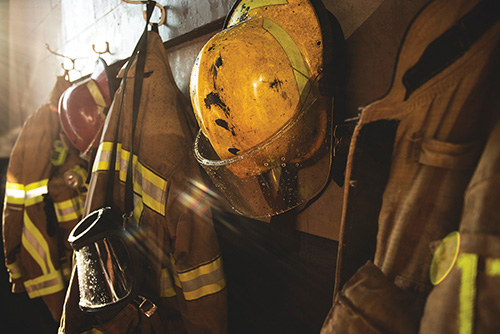Trying to make sense of a workplace tragedy

Safety is something we talk about within the trucking industry, but don’t spend enough time teaching drivers by example.
There is far too little repeat, repeat, repeat when it comes to developing deep-rooted, ingrained safety habits for drivers. We don’t have a universal training standard within Canadian trucking to reach this goal.
The statistics bear this out. If you’re a truck driver, you continue to work within an industry recognized as one of the most dangerous in terms of workplace fatalities per 100,000 workers. What this means is that at some point in your career within the transportation industry, there is a good chance you will come face to face with the loss of a colleague due to a workplace accident. This was the case for me this past August.
On a beautiful Sunday afternoon, I was traveling along Hwy. 17 in northern Ontario when I stopped for a short break and checked my phone for messages. I had a text message from a friend to please call, it was an urgent personal matter.
I made the call only to discover that my good friend, who drove team with her husband, had lost her husband that morning in a tragic workplace accident at their home terminal. It is only when a tragedy such as this hits close to home that we recognize how tenuous our safety on the job is.
When fellow workers with many decades of combined experience fail to keep one another safe, even when armed with the knowledge to do so, the rest of us are left asking why and how it could possibly happen.
My first reaction to this terrible news was shock and disbelief. The pain my friend was experiencing at that moment was, for the rest of us, our worst nightmare. To lose your spouse with whom you shared a deep and abiding love in an instant of unimaginable fate is mind-numbing. To know it was avoidable is soul-shattering.
The sorrow and compassion I felt for my friend turned to anger in the following days. This is how every trucker reacts to a backing accident that results in a fatality. It is the disbelief in the ability to see ourselves in that situation that fuels our anger. It can’t happen to us. It can’t happen to me. It’s preventable.
Luckily, I had the opportunity to sit with a friend, a fellow driver, and talk about that anger. What we ended up talking about was the number of times we have had close calls working outside the truck. Working in and around heavy equipment, we are always at risk.
But we realized that through repetition, we become comfortable, which can lead to complacency. Complacency is a breeding ground for injury, or worse. So, we are human after all. We make mistakes.
Blaming and finding fault where there was no intent to harm will never change what has happened. So, we need to use tragic events like this for teaching and keeping others safe. These are the hardest lessons.
So, I go back to a question I have asked many times before. How is it that first responders can voluntarily place themselves in harm’s way, yet still be statistically at lower risk of physical harm than a truck driver?
I’ll give you the same answer I have before. Until truckers are recognized as the journeymen that they are, things won’t change. Accreditation, certification, and universal apprenticeship training is the path to safety in the workplace. With that ongoing training and recognition comes a solution to the shortage of qualified drivers, our ability to adapt to a changing culture, and our ability to adopt new practices to deal with ever-changing technologies.
Our fierce independence as truckers is both our strength and our weakness. I can’t stress how important it is to always focus on what you are doing.
Be in the moment at all times when you are on duty, whether that be behind the wheel, doing a pre-trip, fueling, or securing freight. Wear your personal protective equipment. Putting on your safety shoes, reflective vest, and safety glasses is as much about slipping in to a ‘safety’ state of mind as it is about physical protection.
Mindfully taking the same walk through the same checklists day after day is important. It may save your life. Remember the credo; when you think you’ve seen it all it’s time to hang up the keys.
Al Goodhall has been a professional longhaul driver since 1998. He shares his experiences via his blog at www.truckingacross canada.blogspot.com. You can follow him on Twitter at @Al_Goodhall
Have your say
This is a moderated forum. Comments will no longer be published unless they are accompanied by a first and last name and a verifiable email address. (Today's Trucking will not publish or share the email address.) Profane language and content deemed to be libelous, racist, or threatening in nature will not be published under any circumstances.